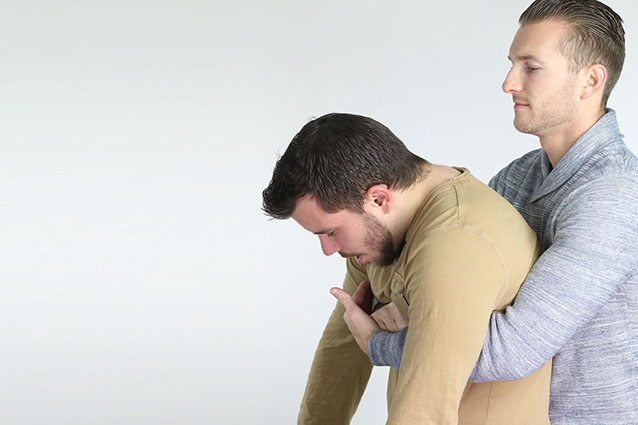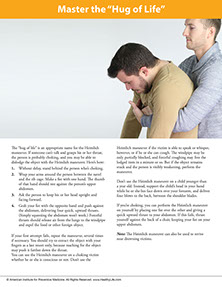CONDITIONS
SYMPTOM CHECKER
Male
Female
Child
Arm, Hand & Shoulder Concerns
Legs & Feet Concerns
Dental & Mouth Concerns
Ear & Nose
Eye Conditions
Head Conditions
Arm, Hand & Shoulder Concerns
Legs & Feet Concerns
Front
Back
Arm, Hand & Shoulder Concerns
Dental & Mouth Concerns
Ear & Nose
Eye Conditions
Head Conditions
Arm, Hand & Shoulder Concerns
Dental & Mouth Concerns
Ear & Nose
Eye Conditions
Head Conditions
Front
Back
Arm, Hand & Shoulder Concerns
Neck Links
Head & Neck Concerns
Arm, Hand & Shoulder Concerns
Neck Links
Head & Neck Concerns
Front
Back
Online Clinic
Wise Healthcare
Master the “Hug of Life”

Print on Demand
The “hug of life” is an appropriate name for the Heimlich maneuver. If someone can’t talk and grasps his or her throat, the person is probably choking, and you may be able to dislodge the object with the Heimlich maneuver. Here’s how:
1. Without delay, stand behind the person who’s choking.
2. Wrap your arms around the person between the navel and the rib cage. Make a fist with one hand. The thumb of that hand should rest against the person’s upper abdomen.
3. Ask the person to keep his or her head upright and facing forward.
4. Grab your fist with the opposite hand and push against the abdomen, delivering four quick, upward thrusts. (Simply squeezing the abdomen won’t work.) Forceful thrusts should release air from the lungs to the windpipe and expel the food or other foreign object.
If your first attempt fails, repeat the maneuver, several times if necessary.
You should try to extract the object with your fingers as a last resort only, because reaching for the object may push it farther down the throat.
You can use the Heimlich maneuver on a choking victim whether he or she is conscious or not. Don’t use the Heimlich maneuver if the victim is able to speak or whisper, however, or if he or she can cough. The windpipe may be only partially blocked, and forceful coughing may free the lodged item in a minute or so. But if the object remains stuck and the person is visibly weakening, perform the maneuver.
Don’t use the Heimlich maneuver on a child younger than a year old. Instead, support the child’s head in your hand while he or she lies face down over your forearm, and deliver four blows to the back, between the shoulder blades.
If you’re choking, you can perform the Heimlich maneuver on yourself by placing one fist over the other and giving a quick upward thrust to your abdomen. If this fails, thrust yourself against the back of a chair, keeping your fist on your upper abdomen.
Note: The Heimlich maneuver can also be used to revive near drowning victims.
This website is not meant to substitute for expert medical advice or treatment. Follow your doctor’s or health care provider’s advice if it differs from what is given in this guide.
The American Institute for Preventive Medicine (AIPM) is not responsible for the availability or content of external sites, nor does AIPM endorse them. Also, it is the responsibility of the user to examine the copyright and licensing restrictions of external pages and to secure all necessary permission.
The content on this website is proprietary. You may not modify, copy, reproduce, republish, upload, post, transmit, or distribute, in any manner, the material on the website without the written permission of AIPM.
2021 © American Institute for Preventive Medicine - All Rights Reserved. Disclaimer | www.HealthyLife.com















































